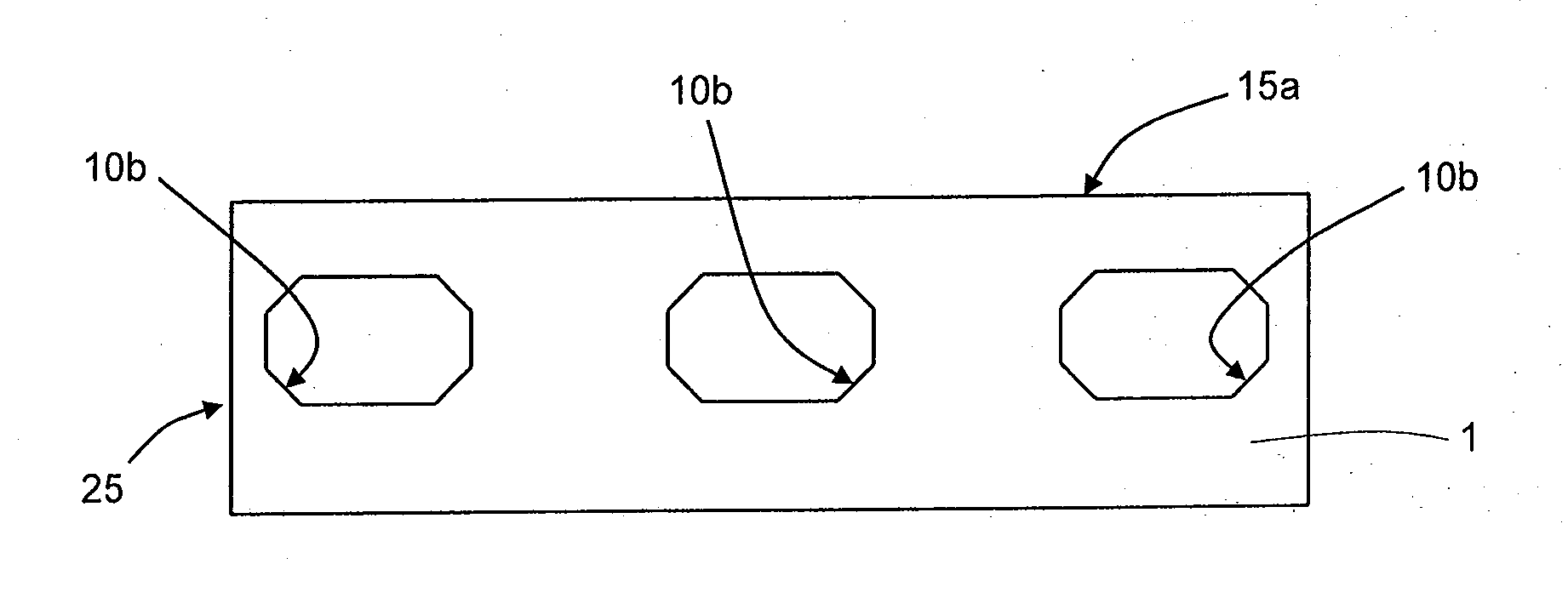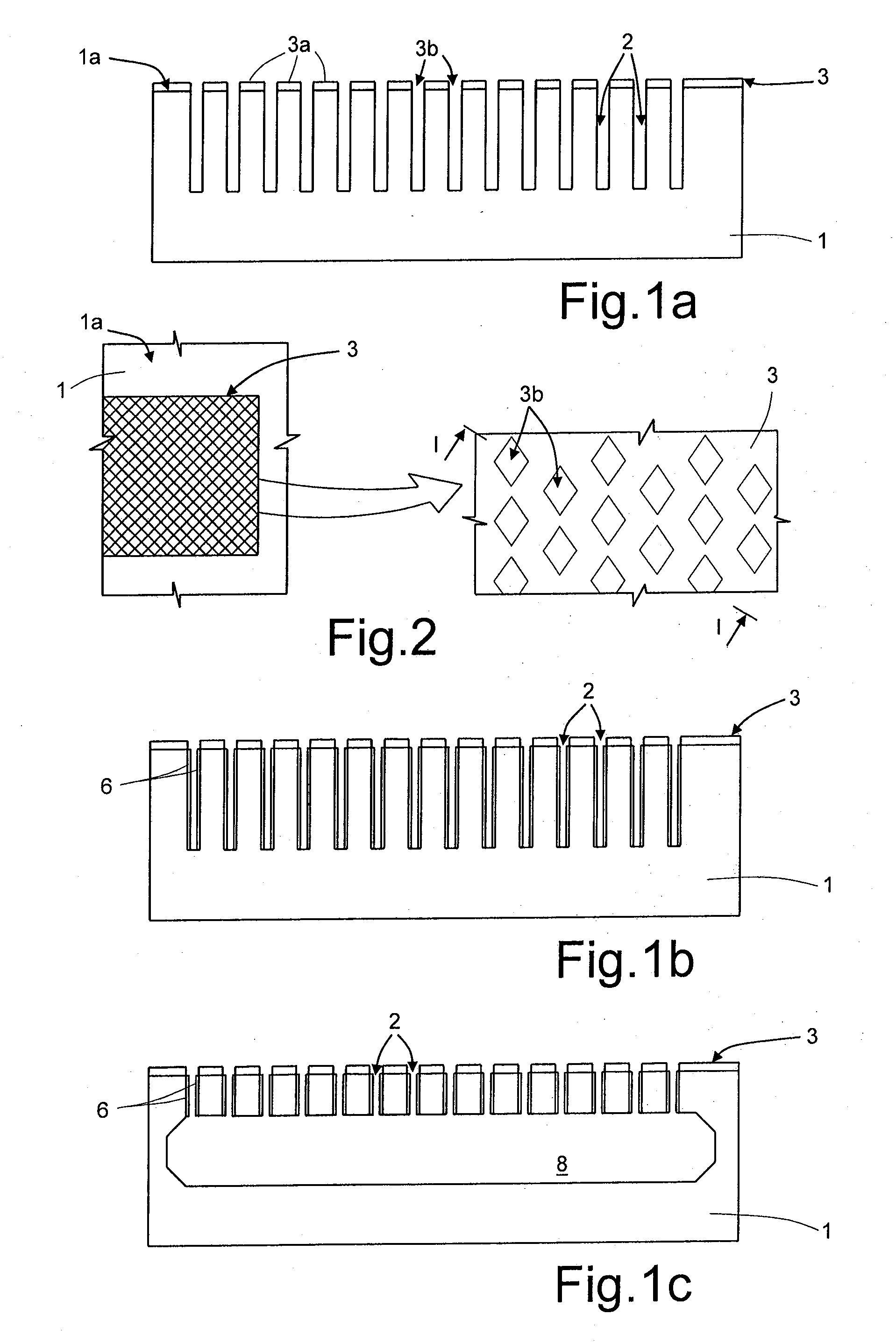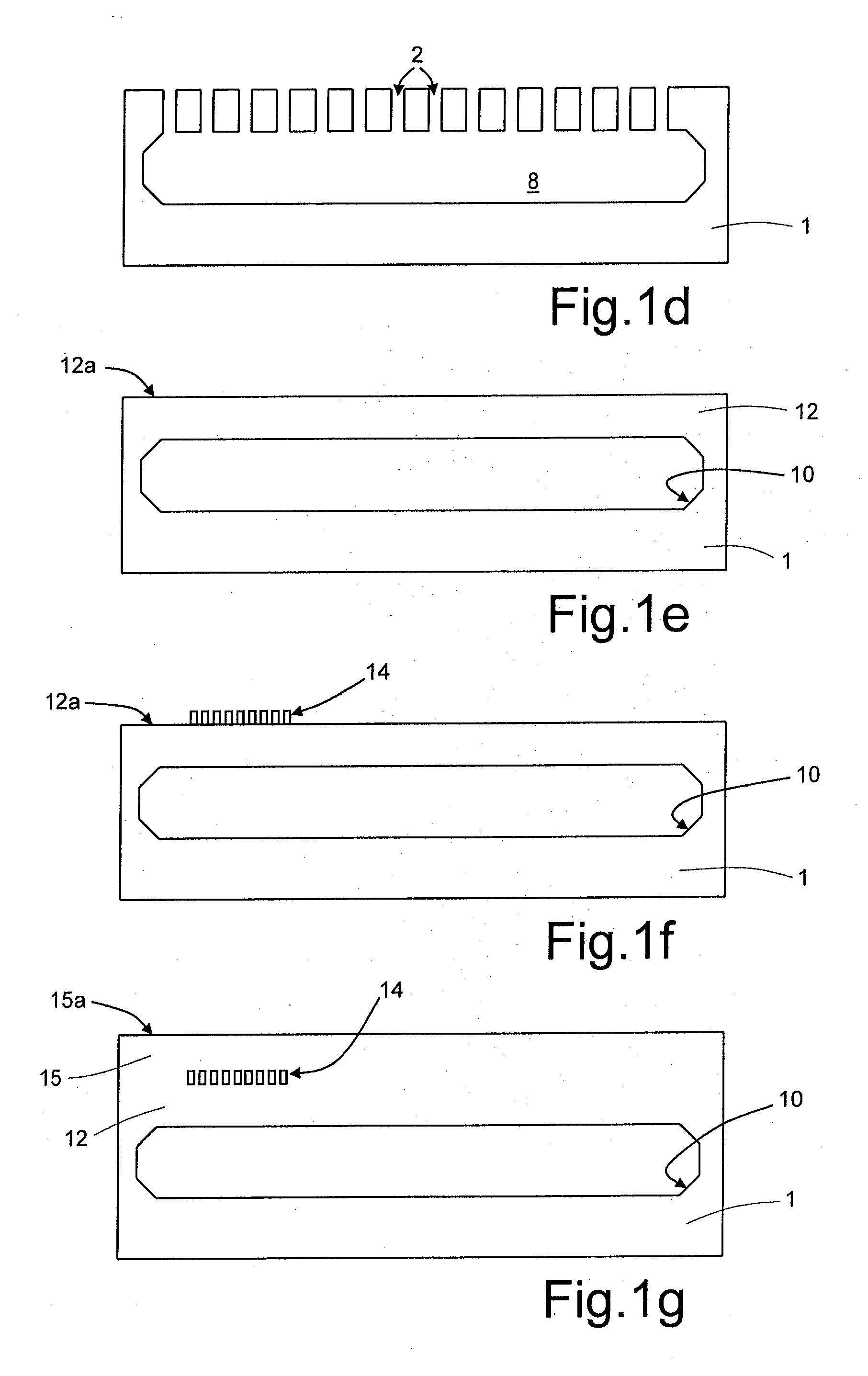Process for manufacturing a micromechanical structure having a buried area provided with a filter
a micromechanical structure and filter technology, applied in the direction of positive displacement liquid engine, laboratory glassware, membranes, etc., can solve the problems of long processing time, high cost, and complicated back-end and bonding operations
- Summary
- Abstract
- Description
- Claims
- Application Information
AI Technical Summary
Benefits of technology
Problems solved by technology
Method used
Image
Examples
Embodiment Construction
[0026]A manufacturing process according to one embodiment of the present disclosure is now described; it is to be noted that some initial steps of the manufacturing process are, at least in part, based upon the processes described in U.S. Pat. No. 7,294,536 and U.S. Application Publication No. 2008 / 261345, which are incorporated herein by reference.
[0027]As shown in FIG. 1a (not drawn to scale, as neither are the subsequent figures), an initial step of the manufacturing process envisages formation, within a substrate 1 of monocrystalline silicon, of a plurality of trenches 2. The trenches 2 are dug through a surface portion of the substrate 1 by means of known techniques of masking and anisotropic chemical etching.
[0028]In particular, a mask 3 is formed on a top surface 1a of the substrate 1, the mask being made of a material resistant to chemical etching, for example photoresist.
[0029]The mask 3 extends (see also the top plan view of FIG. 2) over an area having a shape substantiall...
PUM
 Login to View More
Login to View More Abstract
Description
Claims
Application Information
 Login to View More
Login to View More - R&D
- Intellectual Property
- Life Sciences
- Materials
- Tech Scout
- Unparalleled Data Quality
- Higher Quality Content
- 60% Fewer Hallucinations
Browse by: Latest US Patents, China's latest patents, Technical Efficacy Thesaurus, Application Domain, Technology Topic, Popular Technical Reports.
© 2025 PatSnap. All rights reserved.Legal|Privacy policy|Modern Slavery Act Transparency Statement|Sitemap|About US| Contact US: help@patsnap.com



